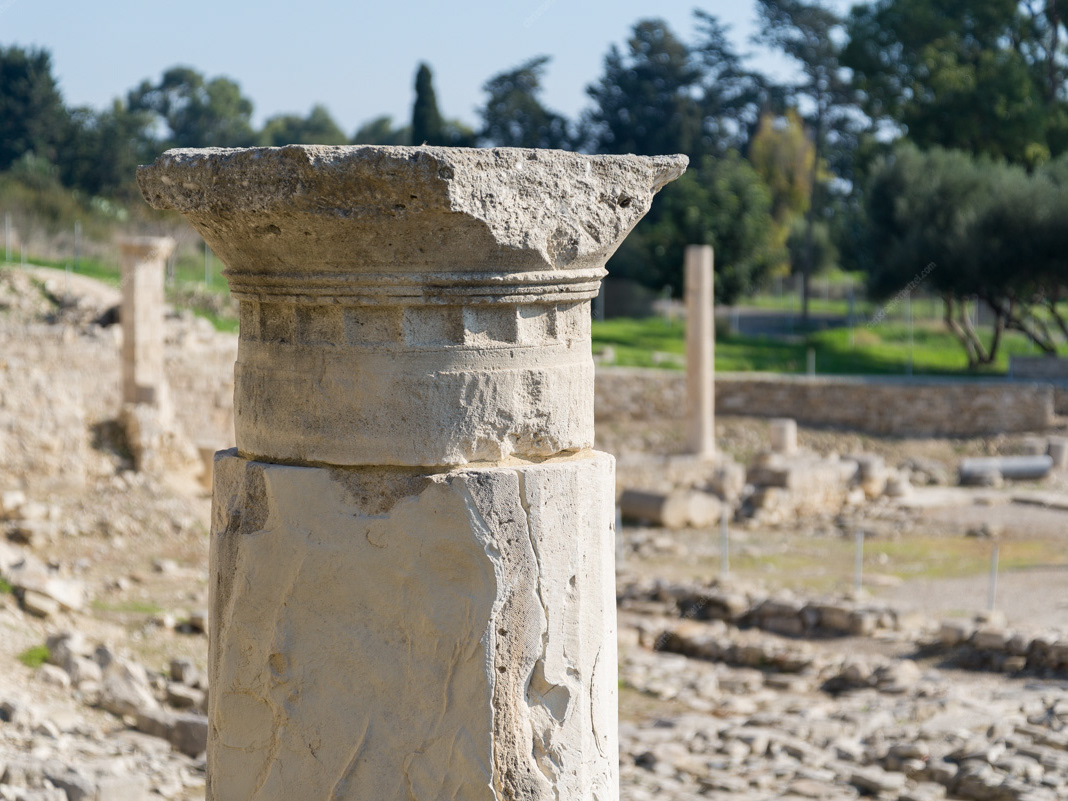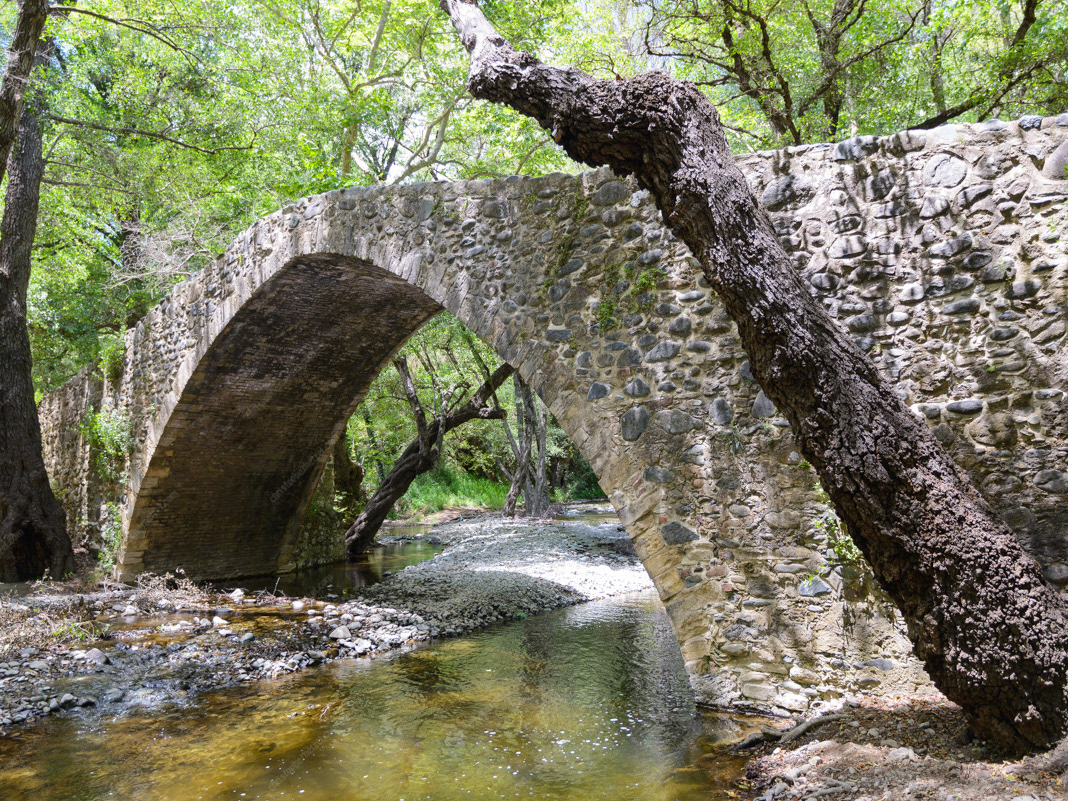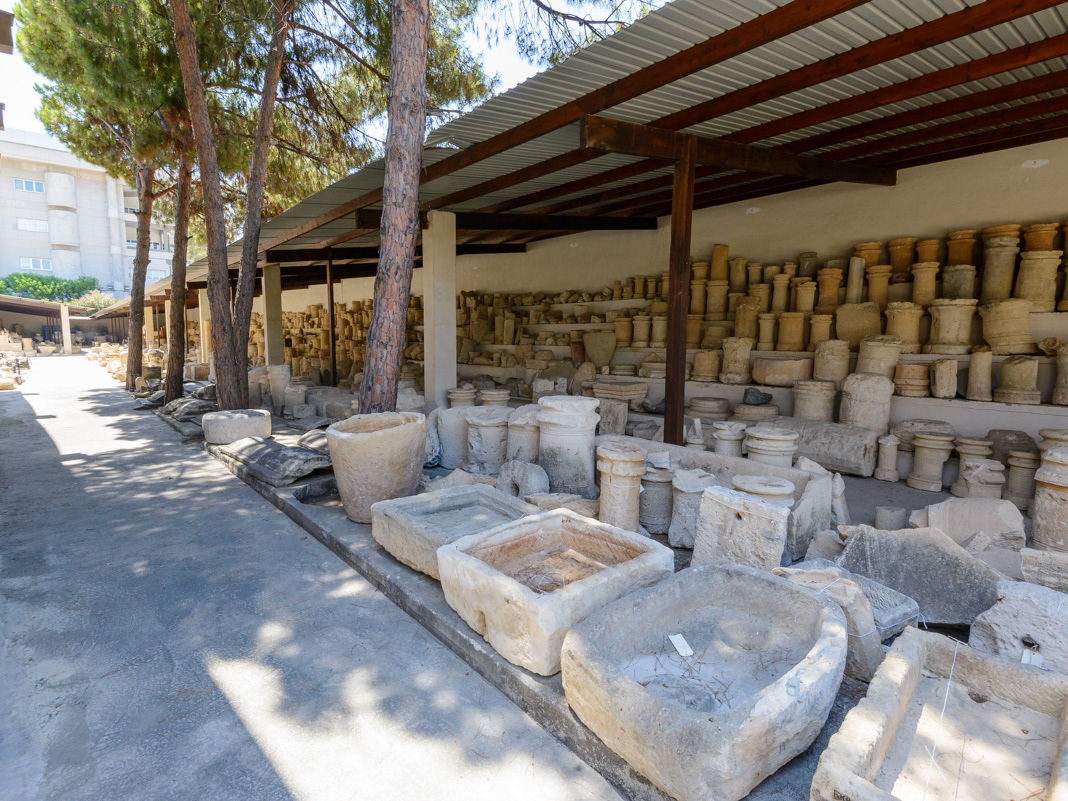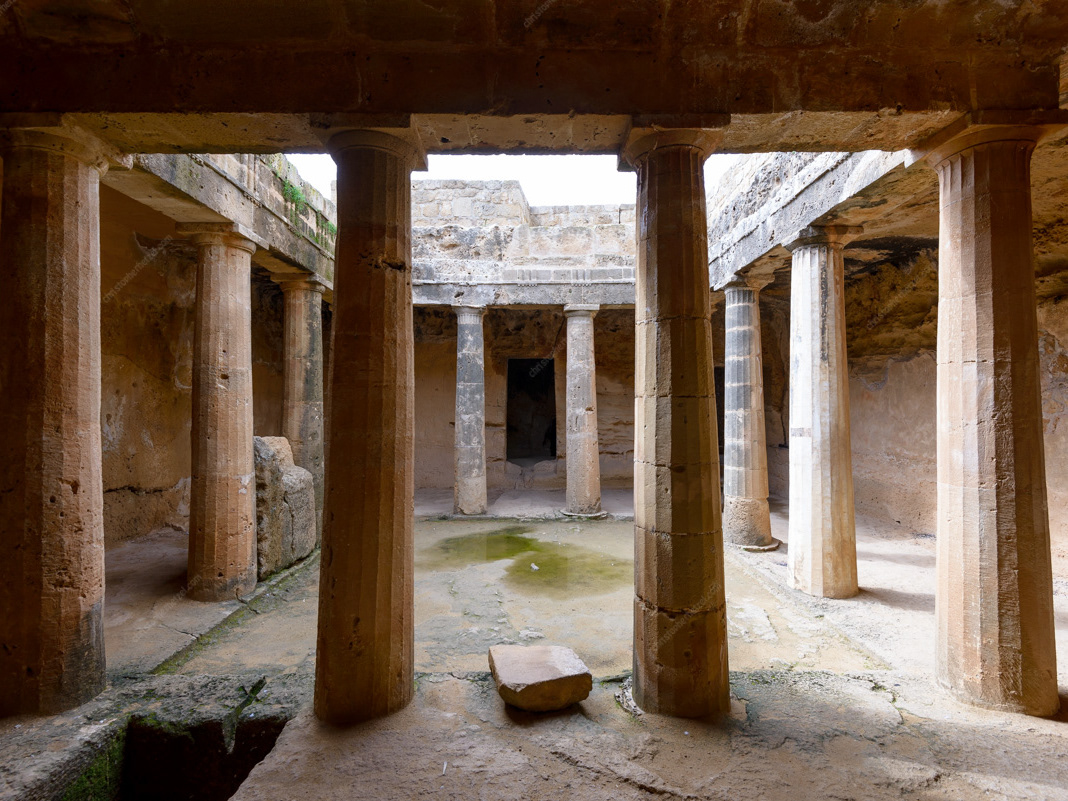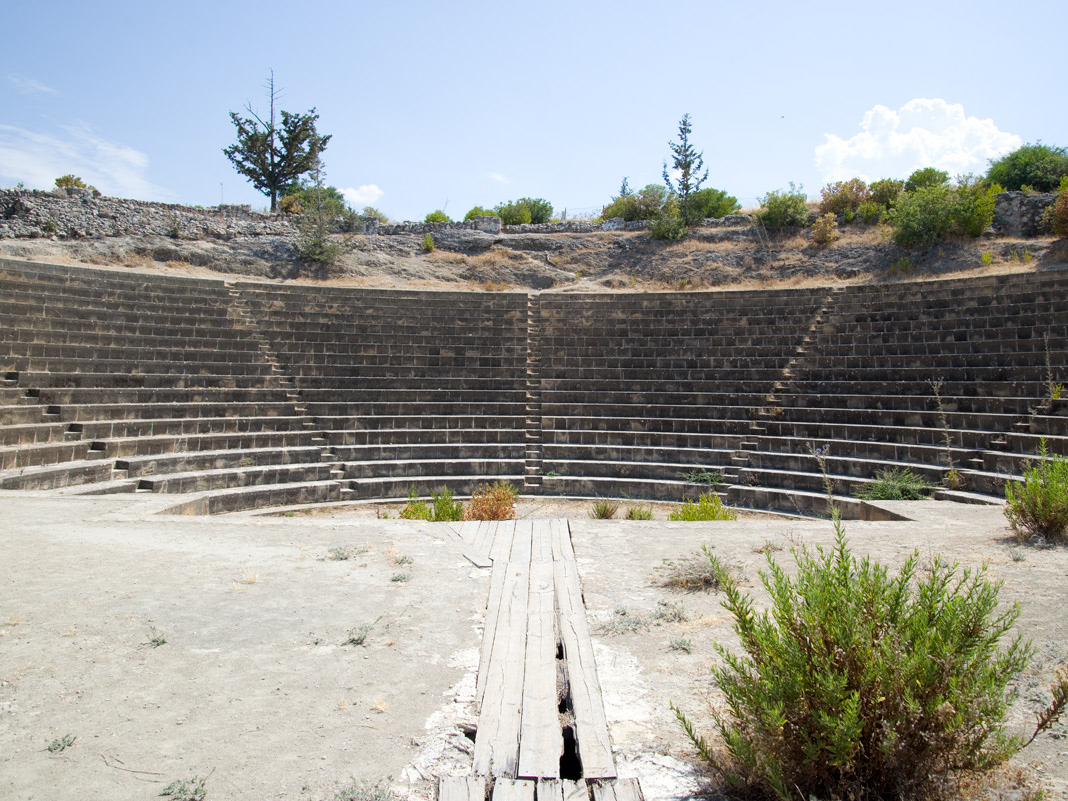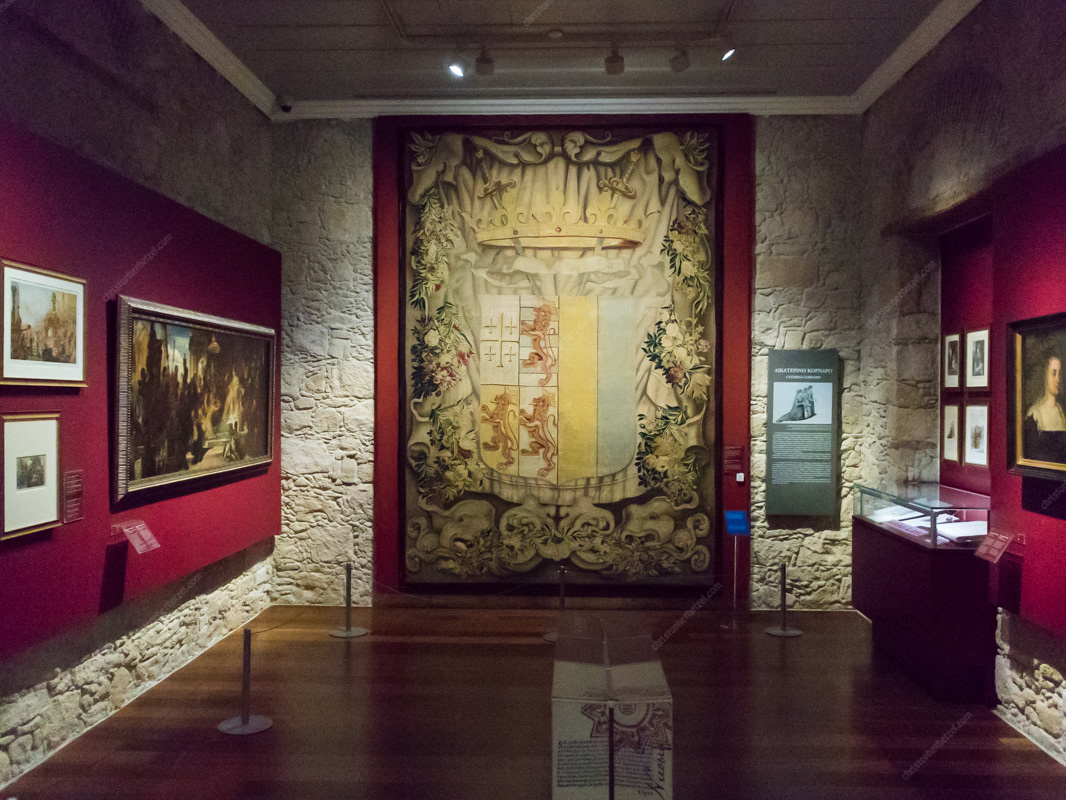The site contains what was once an important sacred quarter, constructed against a portion of the city's northern defensive wall, which dates to the 13th century BC. Within are five temples, built from 1300 to 1200 BC, where the Cypriot Great Goddess (i.e, Anassa or Aphrodite) was worshiped, and where there existed workshops for the smelting of copper (a process associated with Aphrodite, and for which Cyprus was well known at the time). Most notable among the religious structures are an early Mycenaean sanctuary (built circa 1300 BC) and a monumental Temple of Aphrodite-Astarte (built circa 1200 BC)
The site's religious use was largely abandoned by the 4th century BC, following the conquest of Cyprus by Ptolemy I of Egypt. Though the cult of Aphrodite (identified variously as Hera, Artemis, Isis, and Arsinoe of Egypt) continued to thrive on the island until the 4th century AD and the end of the Roman period. Today, the area is heavily populated with the dense residential and commercial development of modern Larnaca's city center.
The walls in the foreground are the foundation walls of the monumental Temple of Aphrodite-Astarte, erected in 1200 BC.
The monumental stone foundation walls of the Temple of Aphrodite-Astarte, built in 1200 BC, still in incredible condition. Archaeologists found inscribed pictures of ships/boats on this wall, which correspond to the Phoenician's seafaring culture.
Remnants of the northern defensive wall of ancient Kition, built in 1300 BC.
Altar stone showing the cultural influence of Minoan Crete,
typified by the "horns of consecration" at its base.
Entry to the sanctuary complex was on the left through a series of outer walls into a forecourt or courtyard - not unlike a modern monastery.
A corner of the Temple of Aphrodite-Astarte is on the right.

